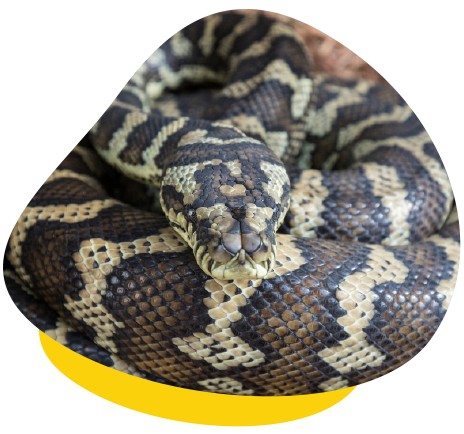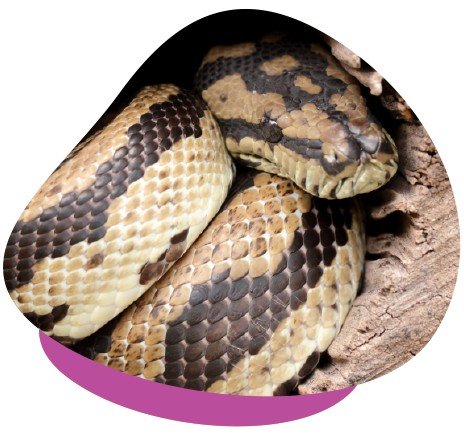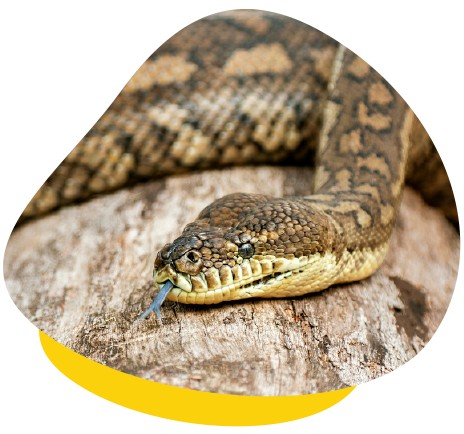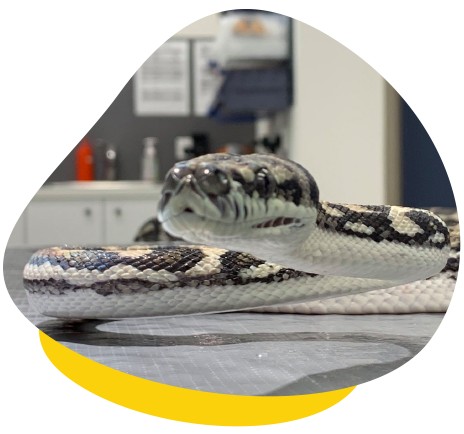Fresh, clean water should be provided at all times in a solid non-spillable container and changed regularly.
Carpet pythons will eat mice or rats of an appropriate size in relation to their body size. Young pythons will become very active when hungry and require feeding every 7 – 10 days. Adults will often be ready to feed immediately after defecation. Frozen food items must be completely thawed before they are offered. This can be achieved by thawing the prey item in a container filled with warm water. The water may need to be changed to keep it warm enough to fully thaw the food through. Discard any food item not taken and never refreeze a thawed food source.
Most adults should be fed every 1-4 weeks; many snakes will continue to eat any food source that is offered, so it is important to be observant as some individuals may become obese.
Adult snakes may feed regularly for several months and then abstain from eating for long periods, occasionally for as long as six months. If the snake is reluctant to take food off the floor, offer it held in tongs. Remember, they are low-energy specialists spending most of their time doing nothing apart from basking.
Avoid feeding if the snake has not been kept warm (i.e. during the winter months) or if sufficient heat is not available after feeding, as the food may decompose and start rotting in the stomach before it can be digested, resulting in regurgitation, gastrointestinal disease or even the death of your snake.







